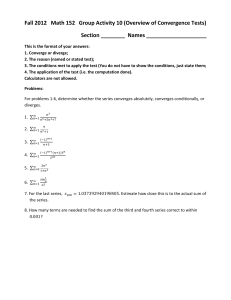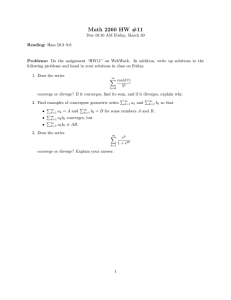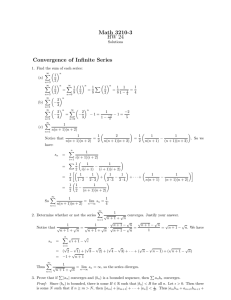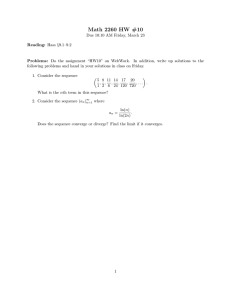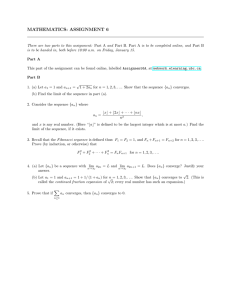Math 2260 Written HW #12 Solutions
advertisement
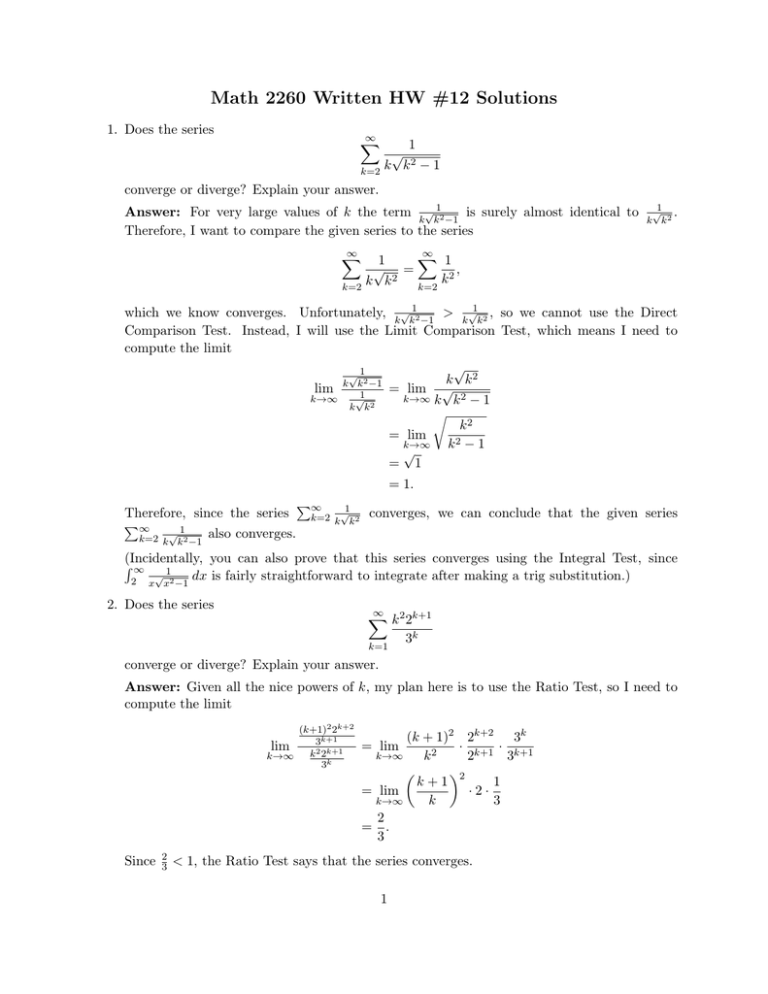
Math 2260 Written HW #12 Solutions 1. Does the series ∞ X 1 k k2 − 1 k=2 √ converge or diverge? Explain your answer. Answer: For very large values of k the term k√k12 −1 is surely almost identical to Therefore, I want to compare the given series to the series ∞ X √1 . k k2 ∞ X 1 1 √ = , k2 k k2 k=2 k=2 which we know converges. Unfortunately, k√k12 −1 > √1 2 , so we cannot use the Direct k k Comparison Test. Instead, I will use the Limit Comparison Test, which means I need to compute the limit √ √1 k k2 k k2 −1 lim = lim √ √1 k→∞ k→∞ k k 2 − 1 k k2 r k2 = lim k→∞ k2 − 1 √ = 1 = 1. Therefore, since the series P∞ √1 k=2 k k2 −1 also converges. P∞ √1 k=2 k k2 converges, we can conclude that the given series (Incidentally, you can also prove that this series converges using the Integral Test, since R∞ √1 dx is fairly straightforward to integrate after making a trig substitution.) 2 x x2 −1 2. Does the series ∞ X k 2 2k+1 k=1 3k converge or diverge? Explain your answer. Answer: Given all the nice powers of k, my plan here is to use the Ratio Test, so I need to compute the limit (k+1)2 2k+2 k+1 lim k32 2k+1 k→∞ 3k Since 2 3 (k + 1)2 2k+2 3k · k+1 · k+1 k→∞ k2 2 3 2 k+1 1 ·2· = lim k→∞ k 3 2 = . 3 = lim < 1, the Ratio Test says that the series converges. 1 3. Does the alternating series ∞ X k+1 (−1) k=1 k k3 + 1 converge absolutely, converge conditionally, or diverge? Explain your answer. Answer: Notice, first of all, that lim k→∞ k k3 +1 is always positive and decreasing and that k 1 k 1 = lim = lim = 0, k 3 + 1 k→∞ k k 2 + 1/k k→∞ k 2 + 1/k so the series satisfies the hypotheses of the Alternating Series Test. Therefore, we know that it converges. The only thing to check is whether it converges absolutely or not. The series will converge absolutely only if the series ∞ ∞ X X k (−1)k+1 k = 3 3 k +1 k +1 k=1 k=1 converges. Of course, since k 3 + 1 > k 3 for all positive integers k, it’s certainly the case that k3 Therefore, ∞ X k=1 k k 1 < 3 = 2. +1 k k ∞ X 1 k < , 3 k +1 k2 k=1 which we know converges. Therefore, we can conclude that the series of absolute values P∞ k+1 k converges, and hence the original series converges absolutely. (−1) k=1 k3 +1 2
